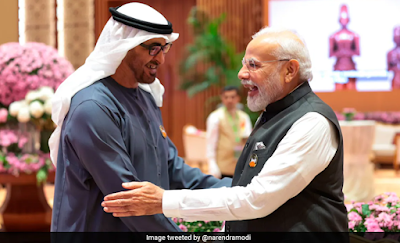The Circus called India
One of the infinite trolls on the various media in
India says, “When a clown enters the palace, he does not become a king; the
country becomes a circus.” Has India become one such enormous circus?
Today’s Malayala Manorama [15 Sep] newspaper
says that the 400 nurses recruited by one single agency in Kochi at one time
alone are struggling to eke out their living by mowing lawns and doing other
jobs such as painting walls. They spent over Rs12 lakh to get to their El Dorado
in the hope that all their financial problems including those of their families
would be over soon when they start earning handsome pay-packets as nurses in
good hospitals.
Millions of young jobseekers are leaving India every
year. “India saw a 30% decrease in jobs for young people since 2016,” say news headlines. It is not only jobseekers that leave the country but also
young students who complete class 12. From the school where I am teaching, half
of the students go abroad for higher studies after class 12 because they know
India holds no promise for them. Interestingly, students from smaller classes
have started leaving the country too now because their parents are already
settled there and those parents too know that India offers no future to the
young generation.
India has become a huge circus with a clown swaying as
gracefully as he can on the topmost trapeze. His laughs can astound us: see the
various
videos in circulation after the last G20 summit.
What has he got to laugh so much about? As Arundhati
Roy pointed out the other day during her speech
on accepting the 45th European Essay Prize:
·
Millions live on subsistence rations delivered in packets
with Modi’s face printed on them. India is a very rich country with very poor
people. One of the most unequal societies in the world.
·
In the nine years of Modi’s tenure, Adani became the world’s
richest man. His wealth grew from $8 billion to $137 billion. In 2022 alone, he
made $72 billion, which is more than the combined earnings of the world’s next
nine billionaires put together. The Adani Group now controls a dozen shipping ports that account for
the movement of 30% of India’s freight, seven airports that handle 23% of
India’s airline passengers, and warehouses that collectively hold 30% of
India’s grain. It owns and operates power plants that are the biggest
generators of the country’s private electricity.
·
While the BJP and Adani accumulated their fortunes, in a
damning report Oxfam said that the top 10% of the Indian population holds 77%
of the total national wealth. Seventy-three per cent of the wealth generated in
2017 went to the richest 1%, while 670 million Indians who comprise the poorest
half of the population saw only a 1% increase in their wealth.
I hope Google won’t accuse me of plagiarising for
quoting Ms Roy verbatim at length. I find her irresistible. She is one of the
few intelligent Indians who still refuse to be entertained by its national
circus.
If India is indeed as great as the great leader
claims, why are millions
of Indians leaving the country? Why are thousands relinquishing
their Indian citizenship every year?






Hari OM
ReplyDeleteEven here, now, after a very lacklustre G20 (from the international p.o.v.) it has been commented that the only one to gain anything from the thing was Modi himself. Having gone somewhat under the radar in our news for quite some time, now India is starting to be discussed for the authoritarian nature of this leader and how it affects the world... one cannot blame those who seek to become part of the diaspora. Perhaps in modern society everywhere, freedom comes with some conditions, but certainly there are places with better freedoms than it now appears to be the case in India. YAM xx
In spite of all that, Modi will win the next election merely because he is playing the religion card very effectively. Now Sanatan Dharma has become a convenient tool in his hands. Ayodhya Temple which will be opened soon will be a far more emotive issue.
DeleteAuthoritarianism is another serious problem. The man thinks he is a demi-god. He expects the nation to fall prostrate before him. He really believes in his own greatness! Age has not mellowed his narcissism a bit.
India is going to be the victim. Her secularism, her spirit of debate, her openness to diversity... that's all going to die. Tragically.
To strengthen their votehold in Maharashtra the BJP and RSS chiefs are coming to Pune to innaugurate the Ganesh festival. It is one of the biggest show in Maharashtra, when God meets God!
ReplyDeleteGod meets god! Kurukshetra is resurrecting. Yet another Gita will be chanted. Yet another ego will keep farting on us.
Delete